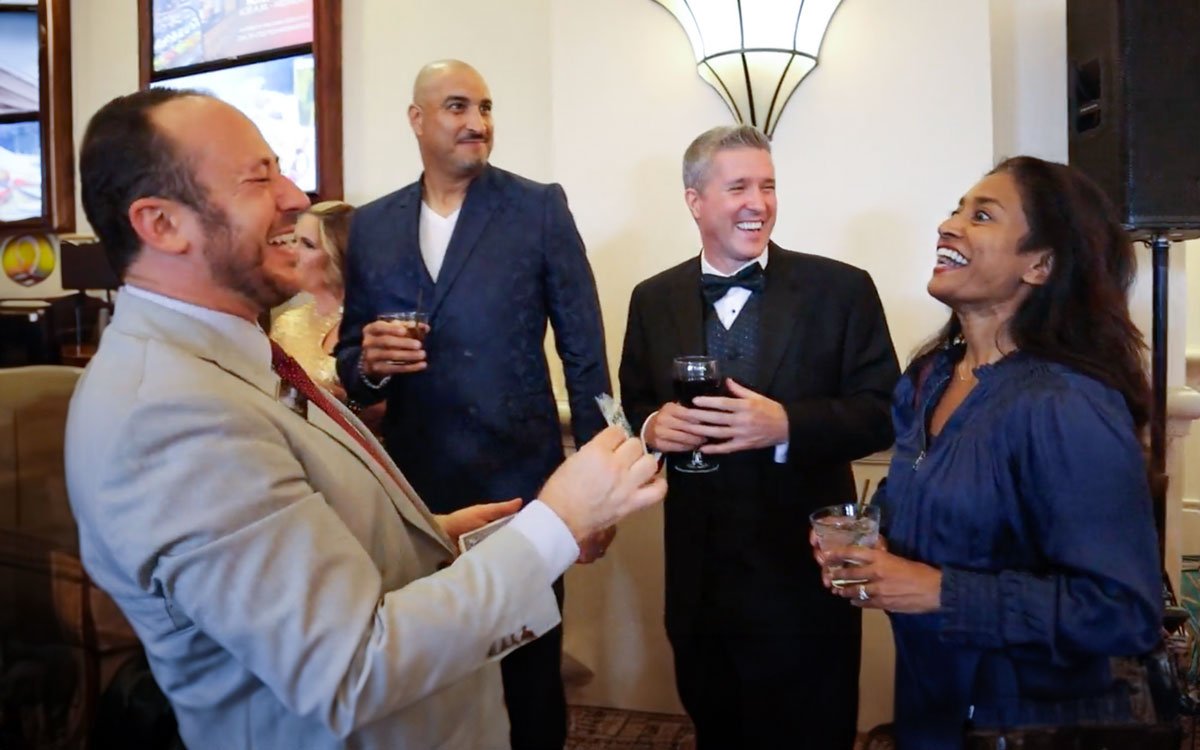Think Like A Magician™ — But Don’t Trick People
The principles we use as magicians can be applied to any professional business endeavor—but it’s not about tricking people.
When I first started telling people that I teach audiences how to “Think Like A Magician™”, the most common reaction I got was: “You’re gonna teach people how to trick others?” For many, the perception of magicians is that they deceive and manipulate people for entertainment. But that is far from what I aim to do with my keynote speeches and workshops.
In fact, thinking like a magician has very little to do with deceiving, and everything to do with perceiving.
The Role of Perception
To me, thinking like a magician means understanding the critical role that perception plays in all of our lives. It’s being able to step outside of your own perspective to see the world through someone else’s eyes. Thinking like a magician is about empathy, communication, and transformation achieved by shaping how people perceive the world around them.
When I ask my clients what it means to Think Like A Magician™, the responses are incredibly varied:
“Being able to captivate an audience!”
“Having showmanship and confidence.”
“Misdirecting people’s attention.”
“It’s all just smoke and mirrors.”
What this showed me is that people have many different perceptions of magicians. However, thinking like a magician is less about theatrics, and more about understanding human psychology.
Stepping Into Someone Else’s Shoes
Thinking like a magician means being able to walk in someone else’s shoes to truly understand their perspective. It’s about recognizing your own biases and assumptions and having empathy for those who have different experiences than your own.
Part of my work as a motivational speaker involves helping leaders and teams break down communication barriers by encouraging them to actively perceive situations from their colleague’s points of view. Thinking like a magician is putting yourself in the other person’s position to gain key insights into how to better collaborate and work together effectively.
An Active Role in Shaping Perception
Another essential aspect of thinking like a magician is understanding that you can play an active role in shaping how people perceive the world. Magicians utilize techniques like misdirection and illusion not to deceive, but to transform perceptions.
You can apply similar principles in business and everyday life without manipulating others. For example, you can spotlight the aspects of a project or idea that you know will resonate with your audience’s values. Or you can reframe challenges to focus people on where the opportunities lie.
A large part of what I teach as a fun motivational speaker is that thinking like a magician gives you the power to influence perceptions for positive outcomes.
Understanding, Empathy, Communication, Transformation
At its core, thinking like a magician is about:
Understanding how people perceive the world around them
Having empathy by seeing through the lens of others’ experiences
Communicating in a way that transforms limited perceptions
Actively shaping perceptions not to deceive, but to enlighten
When you think like a magician in this way, you open up new possibilities for yourself and those around you. Perception is not fixed—we have the power to change it.
So next time you’re faced with a communication challenge or conflict, try on the magician’s hat. Step into the shoes of others, recognize your own biases and focus on transforming perceptions. With a little “magical” thinking, you may be surprised by what new insights are revealed.
Want me to bring the magic of perception transformation to your next conference or corporate event? Get in touch with my team today for your keynote speaking needs.
